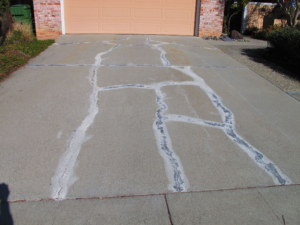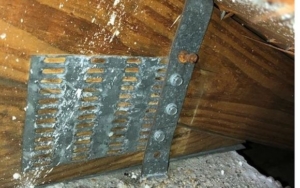Seawall Failures: Causes, Consequences,
and Preventive Measures

Seawalls serve a role in coastal protection. However, they’re not infallible. Seawall failures are all too common and can lead to extensive damage. This is due to a variety of reasons, from natural wear and tear to faulty construction. Understanding why seawalls fail is the first step in preventing catastrophic damage to coastal properties. We’ll delve into the main causes of seawall failures and explore how to prevent them, ensuring the longevity of these vital structures.
What are Seawalls?
Seawalls are an important feature of coastal areas that serve as a protective barrier against the relentless force of the ocean. These structures are specifically designed to prevent erosion and minimize the impact of waves, tides, and storm surges on the adjacent land.
The Purpose of Seawalls
Seawalls are primarily constructed to safeguard coastal properties, infrastructure, and communities from the destructive forces of the sea. They act as a shield, absorbing and dissipating the energy of incoming waves, thereby reducing erosion and preventing coastal flooding.
Understanding the Structure of Seawalls
Seawalls are typically made of sturdy materials such as concrete, steel, or composite materials. The construction process involves building a wall parallel to the shoreline, with its foundation deeply embedded in the ground to ensure stability and resistance to strong ocean currents.
How Seawalls Function
When waves approach the shoreline, they crash against the seawall. The wall’s solid structure and carefully designed slope help to redirect the energy of the waves back into the ocean, preventing them from reaching the land with full force. This redirection minimizes the erosion of the beach and protects the adjacent properties and infrastructure.
Benefits of Seawalls
Seawalls provide numerous benefits to coastal communities and ecosystems:
- Protection from Erosion: By acting as a buffer zone, seawalls help to prevent coastal erosion, preserving the natural beauty of beaches and shorelines.
- Safety and Security: Seawalls offer crucial protection to coastal properties and infrastructure, reducing the risk of damage and loss due to storm surge and high tides.
- Preservation of Coastal Habitats: Seawalls can also help preserve delicate coastal ecosystems by maintaining the stability of the shoreline and preventing the destruction of vital habitats.
- Recreational Opportunities: Seawalls often feature promenades or walkways that provide scenic views of the ocean, creating opportunities for leisure activities and enhancing the overall coastal experience.
Potential Drawbacks of Seawalls
While seawalls offer significant advantages, they also have some potential drawbacks:
- Alteration of Coastal Processes: Seawalls can disrupt natural coastal processes, such as sediment movement and sand deposition, which may lead to unintended consequences in the long term.
- Cost and Maintenance: Building and maintaining seawalls can be expensive, requiring regular inspections, repairs, and potential upgrades to meet changing sea levels and climate conditions.
- Limited Lifespan: Seawalls have a finite lifespan and may eventually require replacement or significant repairs, which can be both costly and logistically challenging.
Importance of Seawalls
Coastal Erosion and Flooding Risks
Coastal erosion and flooding pose significant threats to our coastal communities. As sea levels rise and storms become more frequent and intense, the vulnerability of these areas increases. Without proper protection, erosion can eat away at beaches and cliffs, compromising the stability of nearby structures and endangering lives. Furthermore, recurring flooding can lead to property damage, displacement of residents, and even the loss of entire communities.
Seawalls act as a defensive line, standing firm against the powerful forces of the ocean. By absorbing and dissipating the energy of waves and tides, these structures effectively minimize erosion and reduce the risk of flooding. They form a physical barrier that helps maintain the integrity of coastal areas, preserving both natural habitats and human settlements.
Protection of Coastal Infrastructure and Property
One of the primary purposes of seawalls is to safeguard coastal infrastructure and property. Along our coastlines, we find a diverse range of structures, including residential buildings, hotels, businesses, and critical public facilities. These establishments not only support the local community but also contribute to the overall economic growth of the region.
Seawalls provide a crucial layer of protection, preventing the destructive forces of erosion and flooding from compromising these structures. By withstanding the relentless battering of waves and storms, they ensure the safety and longevity of coastal infrastructure. Without seawalls, these valuable assets would be highly vulnerable to damage and destruction, leading to significant economic losses and disruptions to daily life.
Impact on Local Economy and Tourism
Coastal areas are often major contributors to local economies, attracting tourists with their scenic beauty, recreational opportunities, and vibrant communities. However, the threat of erosion and flooding can have detrimental effects on these thriving coastal economies.
Seawalls play a pivotal role in maintaining the stability and attractiveness of these areas, ensuring their continued prosperity. By protecting beaches, waterfront promenades, and coastal amenities, seawalls provide a sense of security for both residents and visitors. This, in turn, fosters confidence in the local economy, encouraging investment, business growth, and tourism.
Furthermore, the preservation of coastal areas through seawall construction and maintenance helps sustain the natural beauty and ecological diversity that draw visitors to these destinations. By safeguarding the environment, seawalls contribute to the long-term sustainability and success of the local tourism industry.
Common Causes of Seawall Failures
Natural Disasters
Hurricanes
Hurricanes are among the most destructive natural disasters that can wreak havoc on coastal areas. The combination of strong winds, heavy rainfall, and storm surges can exert immense pressure on seawalls, leading to failure. Seawalls must be designed to withstand the forces generated by hurricanes, including the impact of flying debris and the erosive power of storm surges.
Storm Surges
Storm surges occur when strong winds push ocean water toward the shore, resulting in a rapid rise in sea level. These surges can place an enormous amount of pressure on seawalls, causing them to crack or collapse. The height and intensity of storm surges vary depending on the strength of the storm, but they are a significant threat to the stability of seawalls.
Poor Design and Construction
Seawalls that are poorly designed or constructed are more susceptible to failure. Some key factors contributing to failures in this category include:
- Inadequate foundation: A weak or unstable foundation can lead to the gradual erosion of the soil beneath the seawall, compromising its stability.
- Insufficient reinforcement: Seawalls must be reinforced with materials such as steel or concrete to provide the necessary strength to resist the forces exerted by waves and tides. Insufficient reinforcement can result in structural failures.
- Inadequate drainage: Proper drainage is crucial to prevent water accumulation behind the seawall. If water is not effectively drained, it can increase hydrostatic pressure and weaken the structure over time.
Lack of Regular Maintenance
Regular maintenance is essential to ensure the longevity and effectiveness of seawalls. Neglecting maintenance can lead to various issues that may eventually result in failure. Some common maintenance-related causes of seawall failures include:
- Erosion and scour: Over time, the constant impact of waves and tides can erode the soil surrounding the seawall, causing it to become unstable. Regular inspections and repairs can help mitigate erosion and prevent failure.
- Cracks and fractures: Seawalls can develop cracks or fractures due to various factors, including age, weathering, and structural stress. Timely repairs and monitoring can prevent these cracks from worsening and compromising the integrity of the seawall.
- Vegetation growth: The growth of vegetation on or near seawalls can lead to damage. Plant roots can penetrate the structure, causing cracks and weakening the overall stability. Proper vegetation management is needed to avoid such issues.
Consequences of Seawall Failures
Property Damage and Loss
Seawall failures can result in extensive property damage and loss. These structures are designed to provide a barrier against the erosive power of waves and tides. When a seawall fails, the force of the water can breach its defenses, leading to flooding and erosion of the surrounding land. As a result, homes, businesses, and infrastructure located in the affected areas can be severely damaged or even destroyed.
The financial toll of such damage can be staggering. Property owners may face significant repair costs or, in worst-case scenarios, complete losses. Additionally, the decline in property values in areas prone to seawall failures can further compound the financial burden for homeowners and businesses.
Increased Risk to Human Safety
Seawall failures also pose a heightened risk to human safety. As these structures protect coastal communities, their failure exposes residents and visitors to the full force of incoming tides and powerful waves. The breach of a seawall can lead to sudden and unexpected flooding, endangering lives and leaving people vulnerable to drowning.
Furthermore, the collapse of a seawall can compromise the stability of the surrounding land, increasing the risk of landslides and structural failures. This can put individuals at risk of injury or even death.
Environmental Impacts
Beyond the immediate human consequences, seawall failures have significant environmental impacts. Coastal ecosystems are delicate and depend on a delicate balance between land and sea. Seawalls disrupt this natural equilibrium by altering the flow of water and sediment along the coast.
When a seawall fails, the sudden release of water can cause erosion and sedimentation in nearby habitats such as marshes, estuaries, and beaches. This disturbance can lead to the loss of critical habitats for various plant and animal species, disrupting the delicate balance of coastal biodiversity.
The construction and maintenance of seawalls often involve the use of concrete and other materials that can have adverse effects on the environment. These materials contribute to carbon emissions and can degrade water quality through runoff.
Case Studies of Seawall Failures
Example 1: The Gulfport Seawall Failure
The Gulfport Seawall Failure occurred in 2005 when Hurricane Katrina struck the Gulf Coast. The seawall, which was supposed to protect the city from storm surges, failed to withstand the immense force of the hurricane. As a result, Gulfport experienced extensive flooding and damage to its infrastructure. The failure was attributed to inadequate design and construction of the seawall, as it was not built to withstand such a powerful storm. This case study highlights the importance of considering extreme weather events when designing and building seawalls.
Example 2: The Venice Seawall Failure
The Venice Seawall Failure took place in 2019 in Italy. The seawall, known as MOSE, was designed to protect the historic city from rising sea levels and high tides. However, during a period of heavy rainfall and strong winds, the seawall was unable to prevent flooding in Venice. The failure was attributed to a combination of factors, including design flaws, corruption in the construction process, and inadequate maintenance. This case study emphasizes the need for proper planning, oversight, and regular maintenance to ensure the effectiveness of seawalls.
Example 3: The Fukushima Seawall Failure
The Fukushima Seawall Failure occurred in 2011 following the devastating earthquake and tsunami in Japan. The seawall, which was built to protect the Fukushima Daiichi nuclear power plant, was breached by the powerful tsunami waves, leading to a catastrophic nuclear disaster. The failure was attributed to a lack of consideration for the maximum expected tsunami height, as the seawall was designed based on historical data that underestimated the potential tsunami size. This case study highlights the importance of accurately assessing and predicting the magnitude of potential hazards when designing critical infrastructure like seawalls.
In conclusion, these case studies of seawall failures demonstrate the critical importance of proper design, construction, maintenance, and consideration of extreme events when building coastal protection structures. Understanding the causes and consequences of these failures can help inform better practices and contribute to the development of more resilient and effective seawalls in the future.
Seawall Failures: Preventive Measures and Solutions
Robust Design and Construction Techniques
When it comes to seawall construction, robust design and construction techniques are paramount. By building resilient structures, we can minimize the risk of failures and enhance their overall effectiveness. Here are some key considerations:
- Foundation Design: A strong foundation is crucial for the stability of the seawall. Engineers employ techniques such as deep soil mixing and pile driving to ensure a strong base that can withstand the forces exerted by the ocean.
- Material Selection: Choosing the right materials is vital for the durability of the seawall. High-strength concrete or reinforced concrete can offer increased resistance to erosion and corrosion. Additionally, incorporating steel reinforcement can further enhance the structural integrity of the wall.
- Slope and Shape: Designing the wall with an appropriate slope and shape can help dissipate wave energy. Incorporating curved or stepped sections can reduce the impact of wave forces and prevent erosion along the seawall.
Regular Monitoring and Maintenance
Even with robust design and construction, regular monitoring and maintenance are crucial for the long-term performance of seawalls. Here’s why:
- Inspections: Regular inspections allow for the early detection of any signs of deterioration or damage. By identifying issues promptly, necessary repairs can be carried out before they escalate into significant problems.
- Repair and Maintenance: Timely repairs and maintenance are essential to address any identified issues. This may involve resealing cracks, replacing damaged sections, or reinforcing weak areas. Regular cleaning and removal of debris can also prevent blockages and ensure proper drainage.
- Monitoring Tools: Utilizing advanced monitoring tools such as sensors and drones can provide real-time data on the condition of seawalls. These technologies enable early warning systems and facilitate proactive maintenance, reducing the risk of failures.
Adaptation Strategies in the Face of Climate Change
The increasing impact of climate change poses additional challenges to coastal structures. To mitigate the risks associated with rising sea levels and more frequent severe weather events, adaptation strategies must be employed:
- Nature-Based Approaches: Incorporating nature-based solutions, such as creating coastal wetlands or restoring dune systems, can help reduce wave energy and enhance the resilience of coastal areas. These approaches work in harmony with nature to provide effective protection.
- Climate-Resilient Design: Designing seawalls with climate resilience in mind involves considering future sea-level rise, storm surge impacts, and changing wave patterns. This may include raising the height of the wall or incorporating features such as wave-reflecting panels.
- Ecosystem Restoration: Rehabilitating coastal ecosystems, such as mangroves or salt marshes, can provide natural buffers against wave energy and erosion. These ecosystems not only enhance coastal protection but also contribute to biodiversity conservation.
Future Outlook and Challenges
Seawall failures are a growing concern due to rising sea levels and changing climate patterns. As we look to the future, it is essential to understand the challenges we face in protecting coastal communities and the environment. In this section, we will explore the impact of rising sea levels and changing climate patterns, as well as the need to strike a balance between the costs and benefits of seawalls.
Rising Sea Levels and Changing Climate Patterns
One of the significant factors contributing to seawall failures is the rise in sea levels. As global temperatures continue to increase, polar ice caps and glaciers melt, causing the oceans to expand. This results in higher sea levels, which can pose a threat to coastal areas. Additionally, changing climate patterns, such as increased storm intensity and frequency, further exacerbate the risk of seawall failures.
Coastal communities must prepare for these challenges by adopting proactive measures. This includes implementing coastal management strategies that take into account the predicted sea level rise and adapting infrastructure accordingly. By doing so, we can reduce the risk of seawall failures and protect both human settlements and the natural environment.
Balancing the Costs and Benefits of Seawalls
While seawalls play a crucial role in protecting coastal areas from erosion and flooding, it is essential to consider both the costs and benefits associated with their construction. Seawalls are a significant investment, requiring substantial financial resources. Furthermore, they can have adverse effects on the surrounding ecosystem, disrupting natural processes and habitats.
To strike a balance, coastal communities need to carefully assess the specific needs of their area. This includes conducting cost-benefit analyses to determine whether the construction of seawalls is the most effective solution. In some cases, alternative approaches, such as beach nourishment or the restoration of natural coastal defenses, may provide more sustainable and cost-effective options.
It is also important to engage in ongoing monitoring and maintenance of existing seawalls to ensure their effectiveness. Regular inspections, repairs, and upgrades should be carried out to address any potential weaknesses or vulnerabilities. By doing so, we can maximize the benefits of seawalls while minimizing their negative impacts.
Conclusion
Seawall failures can have severe consequences for coastal communities. These failures are often caused by a combination of natural forces such as erosion, storm surges, and high tides, as well as human activities that contribute to the deterioration of these structures. It is essential for coastal residents and authorities to recognize the importance of regular inspections and maintenance to prevent seawall failures. Implementing sustainable and resilient design practices can help mitigate the risks associated with these failures.





